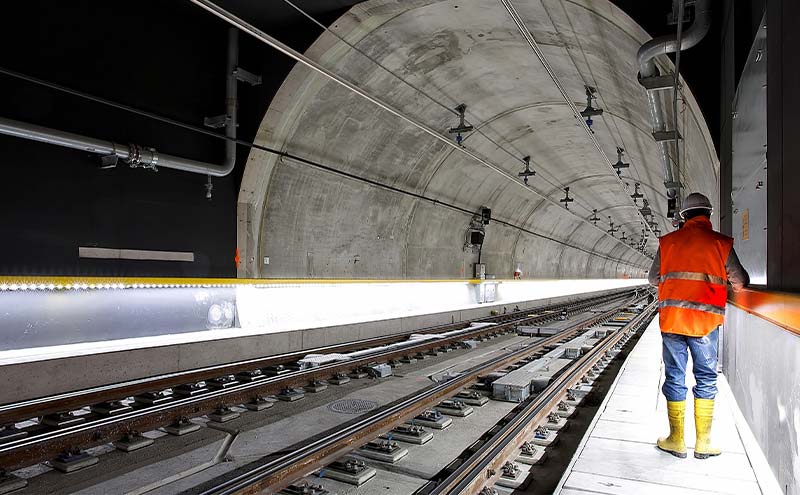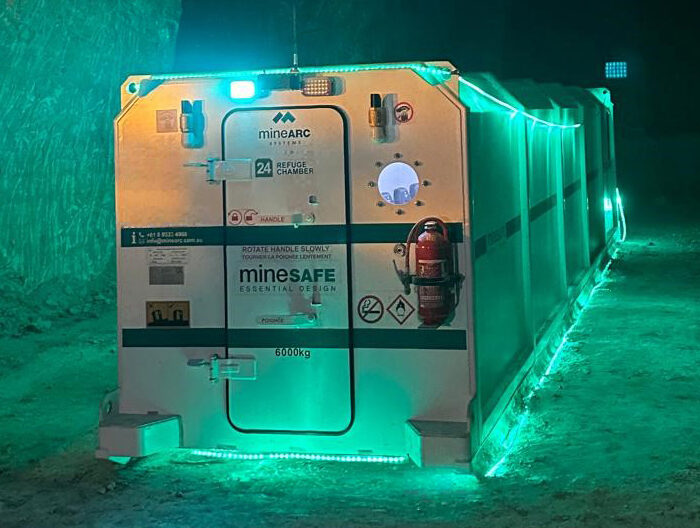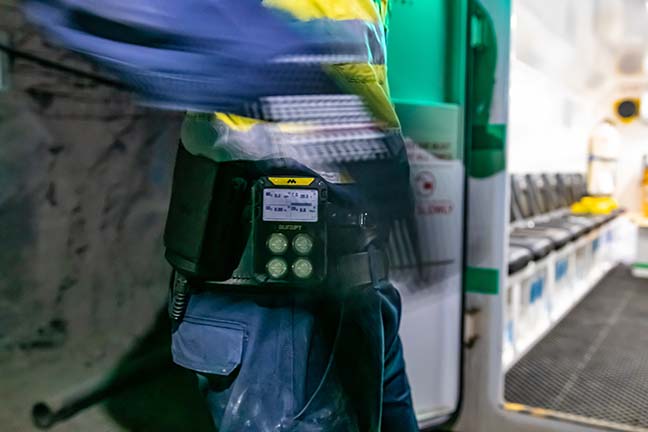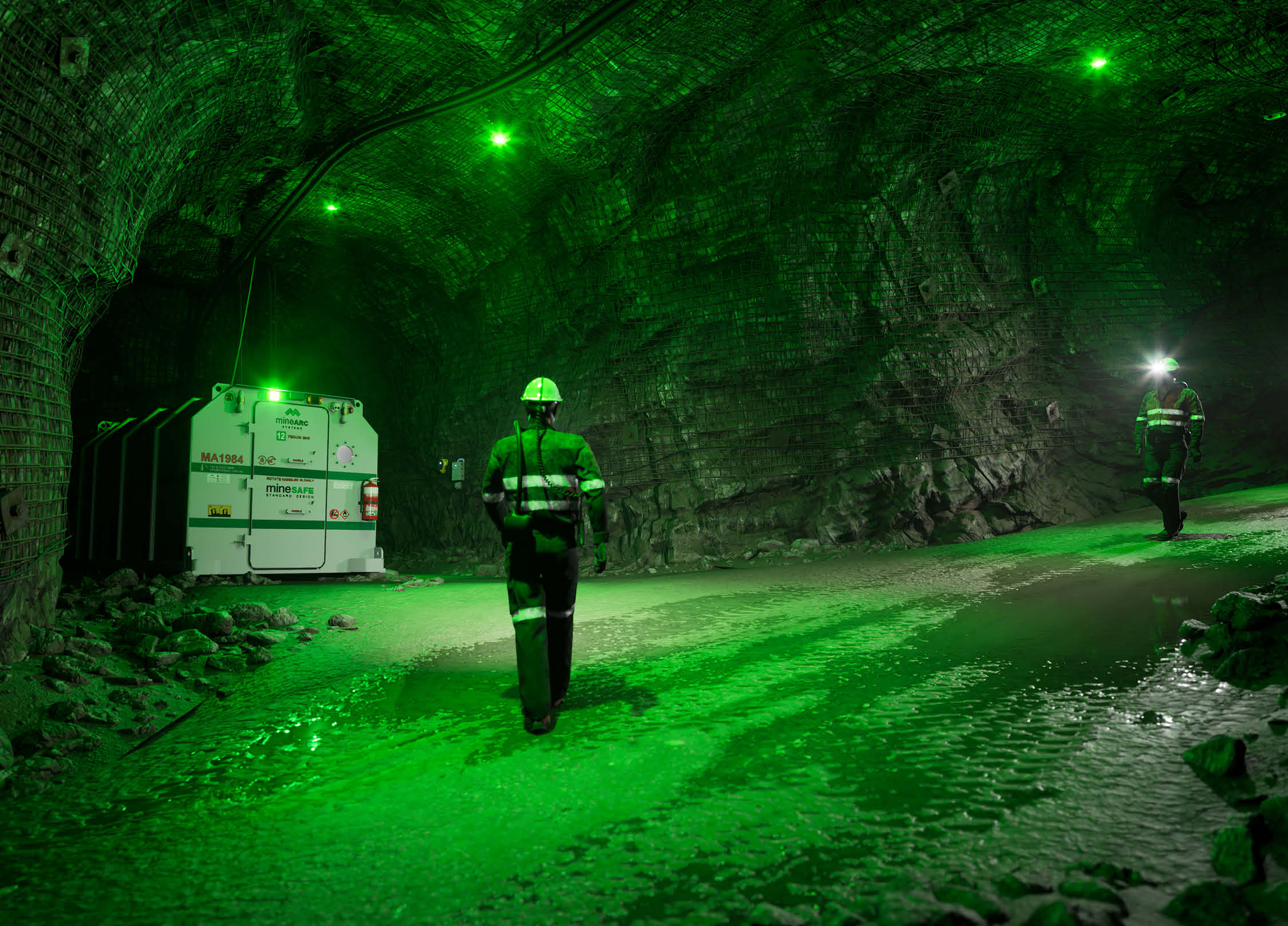Environmental monitoring of gas levels in tunnelling, including gas detection, is essential. There are fixed and portable devices available to detect the concentration of gases within the atmosphere.
Fixed gas monitors can provide constant readings from a set location. It is recommended to distribute fixed gas monitors throughout the project, fixed buildings, or machinery. These site-wide warning systems relay data from a particular area to the control room and across the safety network. If abnormalities in gas levels are detected, automatic alerts and safety measures can be activated. Fixed systems can have the ability to remotely shut down an area, isolating the hazard and ensuring the safety of all personnel in the event of an emergency.
Personal portable gas monitors provide flexibility to be carried throughout the site. If detected levels are outside acceptable parameters, alert systems are activated, and individuals can take immediate appropriate action– reducing risk before it occurs.
Safety Regulations and Guidelines for Gas Level Monitoring in Tunnelling
Most countries include the mandatory monitoring of explosive gases underground within tunnel construction safety regulations and guidelines. Some prominent examples as stated below;
Internationally, the ITA’s Guidelines for Good Occupational Health and Safety Practice in Tunnel Construction outlines the recommended requirements for the occupational health and safety standard of gases such as methane, carbon dioxide, carbon monoxide, and hydrogen sulphide.
7.4 EXPLOSIVE ATMOSPHERES 7.4.1 Checks using electronic atmospheric monitoring equipment should always be made to ensure that methane or other potentially explosive gas (e.g. Hydrogen) is not present in the ground to be traversed. Tests for potentially explosive gas should be specifically carried out before charging a face and after blasting. 7.4.3 It is strongly recommended that ventilation should be used to maintain the concentration of methane or other explosive gas below 10% of the lower explosive limit. Guidelines for Good Occupational Health and Safety Practice in Tunnel Construction
In Australia, Safe Work Guide For Tunnelling Work provides guidance and practical applications for project managers, ventilation managers, safety representatives and employees within the tunnelling industry.
5.5 Monitoring Air Quality What Air Monitoring Should Be Done? After blasting, tests should be carried out before people are allowed to re-enter the tunnel. The tunnel should be monitored throughout the work period in accordance with a suitable procedure. The workplace should be examined by suitably qualified people using detection and measuring equipment. The monitoring should include air testing for: • flammable fumes or gases • oxygen deficiency and the presence of asphyxiant gases • unsuitable temperature and humidity, and • airborne contaminants like toxic gases, fumes or respirable dusts. The person conducting a business or undertaking must ensure air monitoring results are recorded and provided to people who may be exposed to an atmospheric contaminant. Guide For Tunnelling Work
The Occupational Safety & Health Administration in the United States determines the assignment of a ‘competent person’ to perform air monitoring.
Special Air Monitoring Requirements Testing for methane and other flammable gases The competent person must also test all underground work areas for methane and other flammable gases to determine whether the operation must be classified as potentially gassy or gassy. If the atmosphere meets the criteria for these designations, the precautions listed in the section discussing gassy or potentially gassy operations later in this booklet must be followed. Other precautions to take when testing for methane or other flammable gases include: • If 20 per cent or more of the lower explosive limit for methane or other flammable gases is detected in any underground work area or in the air return, all employees must be evacuated to a safe location above ground (except those employees required to eliminate the hazard). Electrical power (except for acceptable pumping and ventilation equipment) must be cut off to the area until concentrations reach less than 20 per cent of the lower explosive limit. • If 10 per cent or more of the lower explosive limit for methane gas or other flammable gases is detected near any welding, cutting, or other hot work, the work must be suspended until the concentration is reduced to below 10 per cent of the lower explosive limit. • When 5 per cent or more of the lower explosive limit for methane or other flammable gases is detected in an underground work area or in the air return, steps should be taken to increase ventilation air volume or otherwise control the gas concentration (unless all requirements of operating under potentially gassy or gassy operations are met).
Monitoring Carbon Dioxide Gas Levels in Tunnels
Carbon Dioxide can be measured using a non-dispersive infrared (NDIR) sensor. Measurement is based on the physical property that CO2 molecules absorb infrared light or particular wavelengths. By shining light through the target gas and using suitable optical filters, the light detector will give an output that can be converted into a CO2 concentration value.
Monitoring Carbon Monoxide Gas Levels in Tunnels
Carbon Monoxide is detected using an electrochemical gas sensor. This sensor measures the concentration of CO by oxidising it at an electrode and then measuring the resulting current. To reduce cross-sensitivity to other combustible gases, it has chemical filters for H2S, N02, NO and SO2.
Measuring CO levels aids in the detection of fires and heating underground. Sensors will detect a steady increase in concentrations of CO, without reduction. Although fumes and diesel exhaust can trigger carbon monoxide alarms, the patterns of rapid increase and decrease are known.
Monitoring Hydrogen Sulfide Gas Levels in Tunnels
The strong odour of hydrogen sulfide can be detected by smell concentrations as low as 1ppm; however, as an alert system, this is an extremely unreliable method and should not be used.
Hydrogen Sulfide can be measured using a gas detector fitted with electrochemical sensors or by using indicator stain tubes. Electrochemical sensors measure gas levels by measuring currents; the required gas undergoes a chemical reaction, producing a current directly proportional to the concentration of gas present in the atmosphere.
The Aura-FX hydrogen sulfide sensor measures H2S levels; ensuring it remains within a safe range of below 10ppm. The sensor emits an initial warning signal at 5ppm, with an alarm sounding when levels reach 10ppm.
Monitoring Methane Gas Levels in Tunnels
Methane gas monitors feature a non-dispersive infrared (NDIR) sensor. Measurement is based on the physical property that CH4 molecules absorb infrared light or particular wavelengths. By shining light through the target gas and using suitable optical filters, the light detector will give an output that can be converted into a CH4 concentration value.
Routine monitoring of gas levels in mines is required at the working face due to the higher propensity for ignition. Monitors are needed to provide alerts when levels exceed 1%. As levels can rise and fall rapidly, and the reaction times of personnel are critical, there is a warning at 1% rather than the dangerous level of 5% to ensure an adequate and timely response.
The concentration of methane can occur away from the working face, which is often monitored less frequently. To ensure workers are continually protected, portable gas monitors need to be carried, reducing the risk to personnel moving across the site.
The Aura-FX Methane Monitor measures CH4 levels, ensuring it remains within a safe range. The sensor emits an initial warning signal at 1.1%, with an alarm sounding when levels reach 2.2%.






